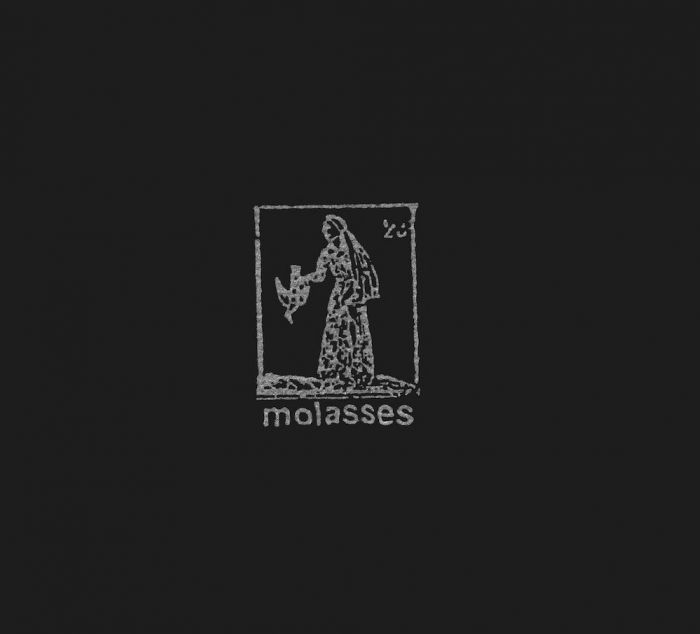You’ll Never Be Well No More by Molasses (Review)

In H.P. Lovecraft’s short story “The Colour Out of Space,” a mysterious meteorite lands on a New England farm, poisons the land and animals, and eventually drives the family who lives there insane. As a result, the area is called “the blasted heath” by the locals. Lovecraft goes into great detail describing the blasted heath: “There was no vegetation of any kind on that broad expanse, but only a fine grey dust or ash which no wind seemed ever to blow about. The trees near it were sickly and stunted, and many dead trunks stood or lay rotting at the rim. As I walked hurriedly by I saw the tumbled bricks and stones of an old chimney and cellar on my right, and the yawning black maw of an abandoned well whose stagnant vapors played strange tricks with the hues of the sunlight.”
If any place or setting could be conjured up in one’s imagination by “You’ll Never Be Well No More,” it would be that of the blasted heath. To call Molasses’ music folk would be an understatement. This is folk music recorded in places so deep in the woods that sunlight never quite reaches there, places where folks get a little funny in the head, where crops always seem to be failing, and animals are always sickly.
Led by Scott Chernoff and featuring members of Godspeed You Black Emperor!, Molasses’ music is hazy and sprawling, without resorting to psychedelic trickery to achieve its bizarre state of mind. Although they draw heavily on folk influences, they also draw on other “traditional” forms of music like blues and gospel. But fear not… this is no mere “retro” rehashing. What keeps Molasses from sounding like a tired rendition of old folk numbers is the alien sense of dread and foreboding that lies just below the surface. Maybe it’s akin to what the pioneers felt before the onslaught of winter, when they knew it was unlikely they would all survive the bitter cold and those who did would face a bleak spring of replanting and rebuilding.
But sprinkled throughout the album are moments of beauty, like the slowly building piano of “Silver Cryst” that rings out like a church bell amidst metallic drones and shrieks. And anchoring it all is Chernoff’s voice. It’s not a “good” voice by any means, but it’s perfectly suited for the music. It’s worn and tired, a little on the nasal side of things, and requires some getting used to. And for some folks, it might not help too much that the lyrics read like poetry written by someone who has been in sun a little too long.
Lyrics like “The wing at your breast is the best knifed little bird… this bed is stained with sailors and lavender and wayward scavengers waiting to be saved” (“Silver Cryst”) seem more than just a little odd, until you realize the song is referring to a statue of Christ. “Five Hundred Miles From Baltimore” refers to a place “where the children play cops and robbers and kill our cats”; Chernoff even casually remarks that “by the grace of our Lord, this place is forlorn” against a church piano and haunting harmonica.
When I first heard Molasses, I was less than impressed. The music seemed in-cohesive, directionless, and more than just a little too mopey for its own sake. But it has a way of getting under your skin. The bizarre lyrics, delivered by Chernoff’s imperfect voice, seem perfect for describing the bleak vistas and haunted people that populate the 5 songs (6 if you count the hidden track). Death, misery, suffering, hopelessness… these are the themes that Molasses explores. Their’s is not a pretty world, but it is a world where moments of rare beauty do shine through. And that makes Molasses’ music all the more honest and real. Even in the midst of “the blasted heath,” something can grow.
Of special note is the extra-cool packaging the record comes in. The lyrics and record info are printed in silver ink on black pieces of cardstock, which are then tied together with black thread. In the back of the booklet is a small pouch for the CD. And all of it is contained within a black envelope with the band’s logo written in silver ink. It definitely ranks up there, packaging-wise, with what I’ve seen from Constellation, and more than makes up for the 13 minutes or so of silence that come before the hidden track (which sounds like every blues cliche you’ve ever heard wrapped up in bizarre noises and distant organs).